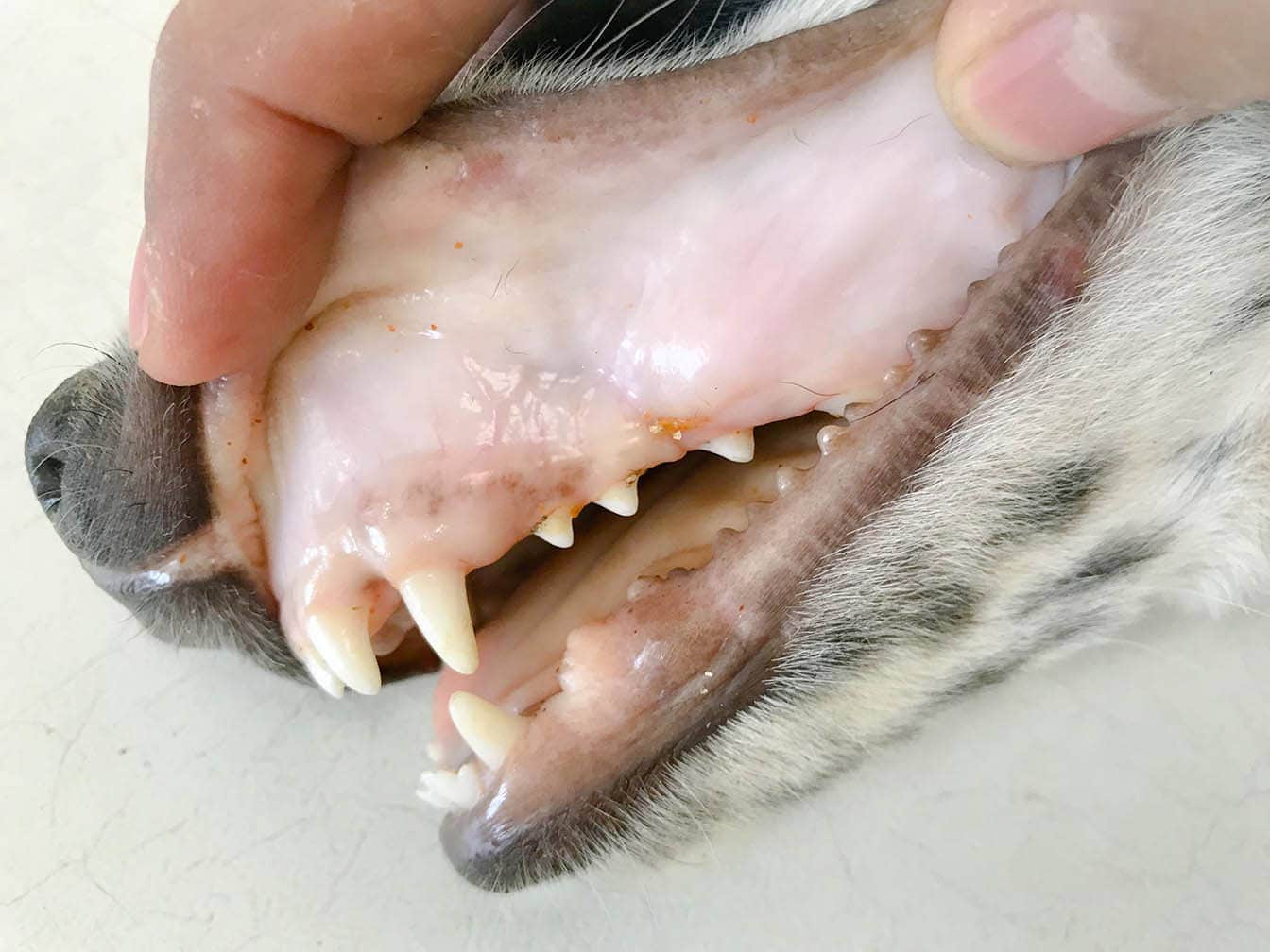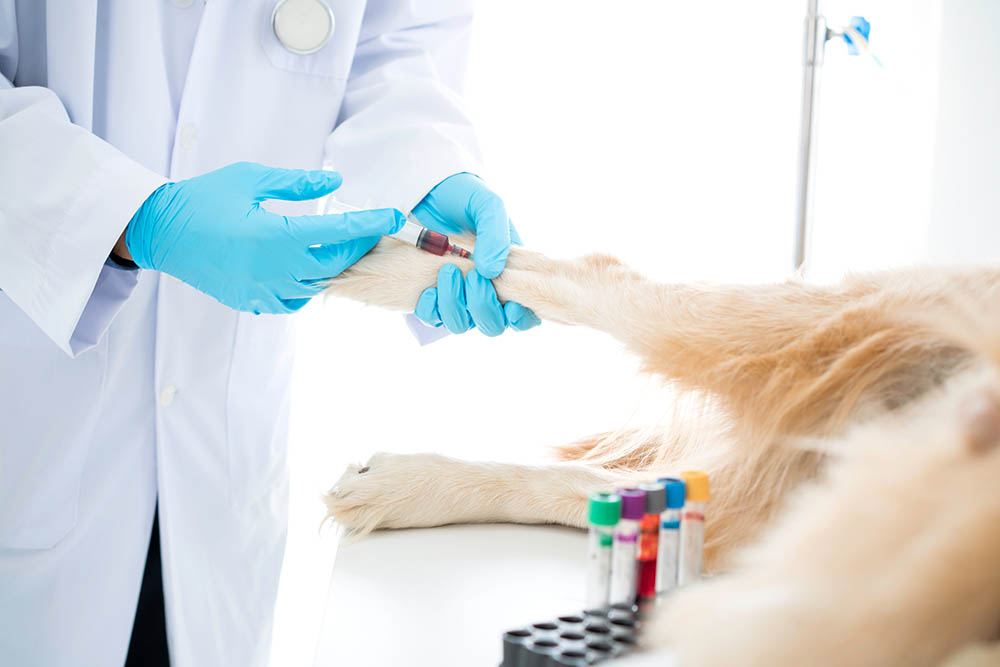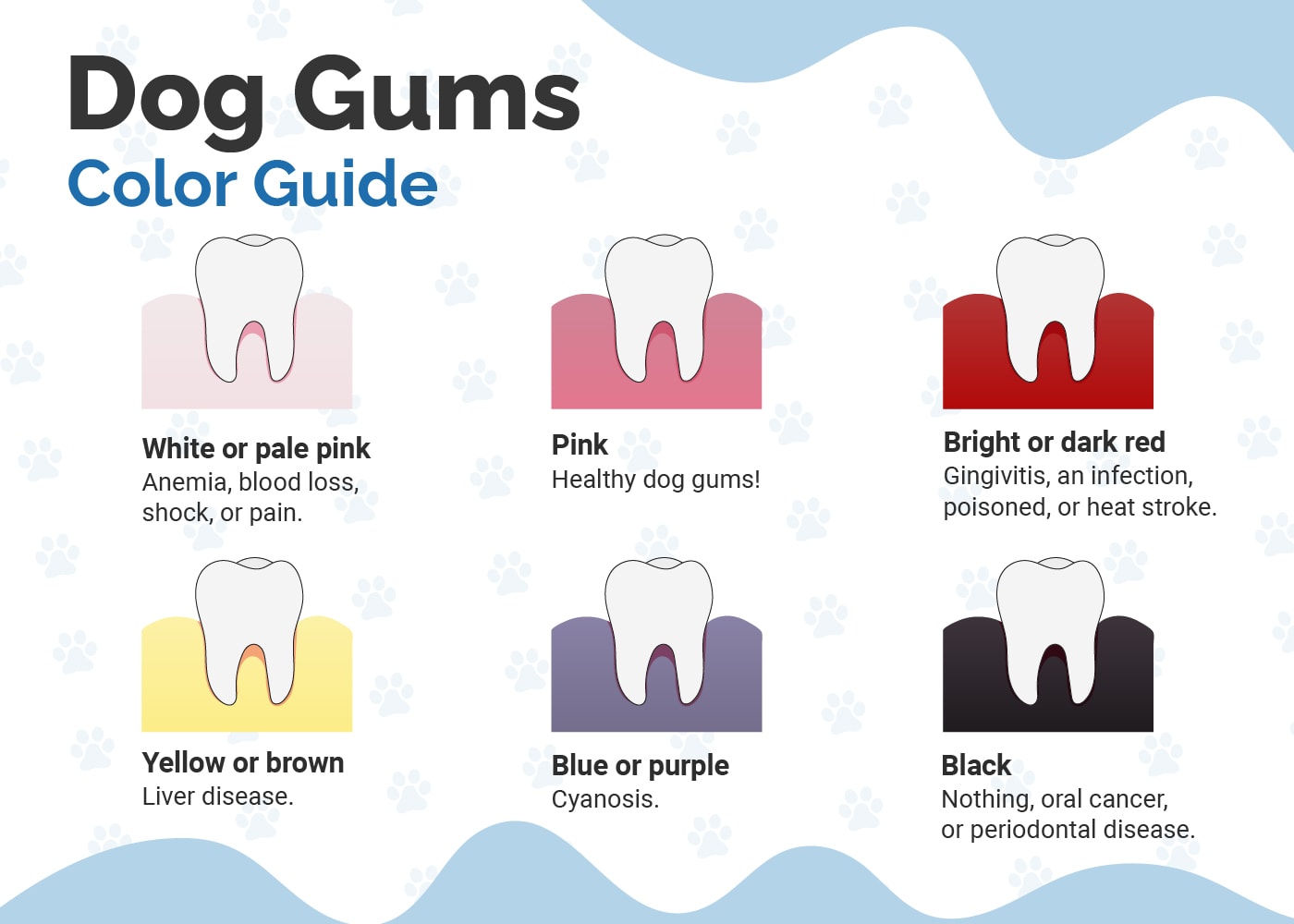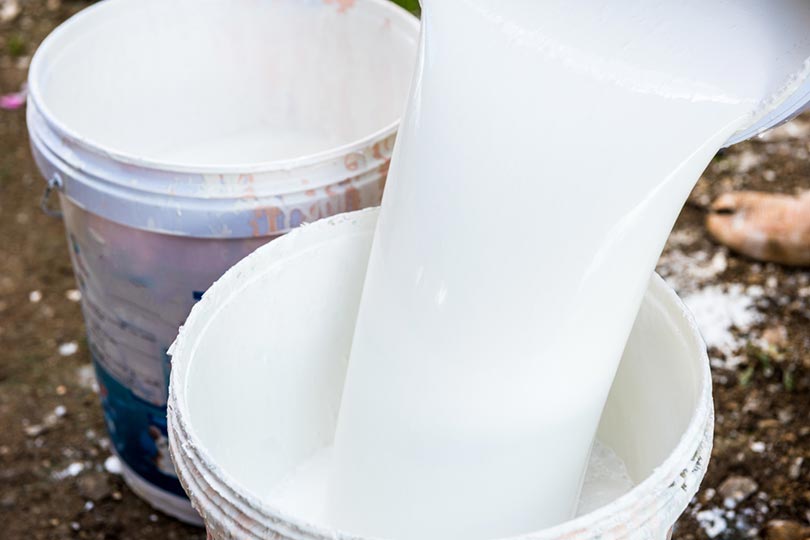Autoimmune Hemolytic Anemia in Dogs: Signs, Causes & Treatment (Vet Answer)
Updated on

Click to Skip Ahead
Autoimmune hemolytic anemia is one of those diseases that is very well known within the medical community, but I find many dog owners haven’t heard of it or don’t know many details about it. The disease can appear in several ways and be very scary and difficult to treat for some dogs.
To learn more about what anemia is, how the immune system is involved in this disease, and what diagnosis and care for a dog with autoimmune hemolytic anemia might look like, please read on!
What Is Autoimmune Hemolytic Anemia?
Autoimmune hemolytic anemia, also known as immune-mediated hemolytic anemia (IMHA), is a disease in which a dog’s immune system attacks its red blood cells.
A dog’s bloodstream comprises red blood cells, white blood cells, platelets, and plasma. A standard amount of each component should be present in a normal blood sample. When the percentage of a dog’s blood that is red blood cells is lower than it’s supposed to be, they are anemic.
This can occur for a variety of reasons. In the case of autoimmune diseases, a dog’s immune system is guilty of attacking its own cells. So, for autoimmune hemolytic anemia, a dog’s immune system incorrectly attacks its own red blood cells, destroying them and causing potentially severe, life-threatening anemia.

What Are the Signs of Autoimmune Hemolytic Anemia in Dogs?
The signs of autoimmune hemolytic anemia depend on the severity and onset of the anemia. Anemic dogs will be lethargic, have a poor appetite, experience exercise intolerance, may be dehydrated, have a fast heart rate, and may have intermittent vomiting and/or diarrhea with or without blood. The slower the anemia occurs, the better a dog can adapt to their current red blood cell count and the more subtle their signs of anemia will be.
With severe anemia or rapid onset anemia, signs may include sudden collapse, a painful abdomen, respiratory distress such as panting or gasping, pale to white gums or especially for autoimmune hemolytic anemia, yellow gums, and skin, also known as jaundice, which is triggered by the contents of red blood cells now loose in their blood, and potentially petechiae, which are red spots on the skin due to poor clotting.
What Is the Cause of Autoimmune Hemolytic Anemia in Dogs?
Autoimmune hemolytic anemia can happen for two reasons. The first (primary) is when the body spontaneously attacks the red blood cells for no known insult. The second (secondary) is when something else triggers the immune system, and this overstimulated group of cells overzealously decides that red blood cells need to be destroyed. These other triggers can be just about anything but would more commonly be parasites, infections, fevers, allergic reactions, some medications, cancers, snake bites, and toxicities.
Primary autoimmune hemolytic anemia is more common than secondary in dogs. There is also a genetic component, with some breeds more likely to develop it than others, such as Cocker Spaniels and Collies.

How Is Autoimmune Hemolytic Anemia Diagnosed?
Diagnosis starts at the physical exam when a thorough history and pale or yellow gums will identify a suspect case. The most important test for diagnosis in a dog suspected to have autoimmune hemolytic anemia is a CBC, the blood panel that assesses the components of a dog’s blood. This CBC will confirm anemia with special characteristics indicating IMHA may be responsible. This type of anemia is called regenerative because the body will still be trying to make red blood cells. The red blood cell count will be low due to the destruction of already produced cells, not the failure to make them in the first place.
Dogs with autoimmune hemolytic anemia may also suffer from low platelets, which would also be seen on the CBC. Upon seeing any of these changes, a veterinarian can run tests to check if red blood cells are clumped together or if white blood cells are attached to red blood cells at abnormal levels.
Saline Agglutination Test – checks for clumping of red blood cells to each other. If true clumping has occurred, this provides a diagnosis of IMHA.
Direct Coombs Test – if a dog is highly suspected of having IMHA but has a negative saline agglutination test, this test which checks for antibodies in the immune system that match markers on the surface of the dog’s red blood cells can also diagnose it.
How Do I Care for a Dog With Autoimmune Hemolytic Anemia?
If you note any signs of autoimmune hemolytic anemia in your dog, you want to have them evaluated by a veterinarian as soon as you can. Since an overactive immune system causes the disease, treatment consists of giving immunosuppressives to decrease the production of antibodies against the red blood cells by white blood cells, decrease the destruction of red blood cells, and lower inflammation. These medications are dosed and chosen in whichever way best corrects the dog’s anemia.
Medications commonly chosen for daily care are steroids, azathioprine, cyclosporine, mycophenolate, or leflunomide. In some cases, removing a dog’s spleen may be necessary as this organ is responsible for white blood cell production.
It is common for a dog with autoimmune hemolytic anemia to need hospitalization when first diagnosed so they can receive a blood transfusion. At home, it is very important to give their medications exactly as prescribed and watch their gums for signs of paleness or yellowing and their skin for petechiae.

Frequently Asked Questions (FAQs)
How long can a dog live with autoimmune hemolytic anemia?
Autoimmune hemolytic anemia unfortunately can be difficult to treat, and dogs can have future Autoimmune hemolytic anemia, unfortunately, can be difficult to treat, and dogs can have future episodes even if they survive treatment. Statistics on survival rates can vary, especially since prognosis depends heavily on how ill a dog is at diagnosis and what triggered their IMHA. But generally, about 50% of dogs with IMHA survive to a year after diagnosis; those that do survive can live for many years afterward and lead otherwise normal lives.
How long does it take a dog to respond to treatment for autoimmune hemolytic anemia?
Veterinarians expect their treatments to start helping a dog almost immediately, especially if they receive a blood transfusion. Improvements can be slow, but if a dog hasn’t improved within a week or so, it is not uncommon to start adding or altering medication choices and dosages.
Does autoimmune hemolytic anemia go away in dogs?
Unfortunately, once a dog has one episode, even if it was triggered due to a single event like exposure to a toxin, they can now have future episodes at any time for the rest of their life.

Can vaccines cause autoimmune hemolytic anemia in dogs?
While often considered a possible trigger for IMHA, there is no conclusive evidence that this is actually true. Additionally, the majority of IMHA cases in dogs are the primary type meaning idiopathic or spontaneous, for no known reason, so if vaccines can cause IMHA, the risk of them doing so is incredibly small.
While vaccines aren’t a confirmed trigger for IMHA, it isn’t uncommon to minimize vaccine use in dogs that have already had an episode since they stimulate the immune system, which you want to avoid.
Are medications for autoimmune hemolytic anemia in dogs dangerous?
The medications of choice for IMHA are immunosuppressives, which can leave a dog at risk for developing infections while on these medications. Veterinarians will monitor the dosing of these medications carefully, using the lowest possible dose that is effective, as this lowers the risk of complications and side effects for the dog.
Conclusion
Autoimmune hemolytic anemia is a severe disease process in dogs, but early diagnosis can greatly improve the prognosis. Monitoring your dog for signs of IMHA, such as lethargy and exercise intolerance, vomiting, bloody stool, pale gums, and episodes of collapse, can help you know when to bring your dog straight to a veterinarian to be checked.
Remember that sometimes your dog may seem a little slower to move and eat than usual, so if you ever notice anything that seems off with your dog, it’s good to practice checking their gum color to see if the color is paler than normal. This disease is of particular concern for Collies, Sheepdogs, Spaniels, and Poodles, so it may be worth keeping pet insurance if you have this breed of dog, as the treatment for IMHA is very expensive.
Related Read:
- 5 Best Dog Foods for Autoimmune Disease – Reviews & Top Picks
- How to Treat Anemia in Dogs: Safe Methods (Vet Answer)
Featured Image Credit: Mangpor_nk, Shutterstock















